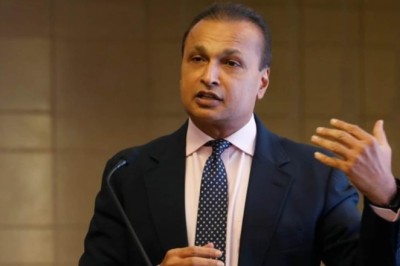Union Budget: What It Means, How It Chalks Out Financial Plan For The Year
The Union Budget is a financial statement prepared by the government outlining the fiscal policies, and the income and expenditure plans for the upcoming financial year. It plays a major role in shaping the country's economic landscape, determining how resources are allocated across various sectors and how the government plans to achieve its financial objectives.
Finance Minister Nirmala Sitharaman will present the Budget for the financial year 2025-26 in Parliament on February 1. All eyes will be on public spending, measures to curb fiscal deficit, steps to boost private investment and announcements on relief for taxpayers.
The Union Budget is a detailed account of the government's finances, which includes its revenue and expenditure projections for a financial year. The Budget is essential for ensuring transparency in the financial dealings of the government, as it reveals the expected income from taxes and other sources, as well as the allocations for various sectors like infrastructure, defence, education and health, among others.
As per Article 112 of the Indian Constitution, the Union Budget must be presented before Parliament at the start of each fiscal. The Budget statement provides an overview of government receipts and expenditures, outlining details such as tax revenues, other sources of income and a breakdown of spending across various sectors. It also highlights the distribution of plan outlays by the various ministries and departments, along with a summary of resources allocated by the central government to state and Union Territories.
The Budget is a detailed account of the government's finances and it primarily comprises two parts -- the revenue budget and the capital budget.
Revenue budget: This part of the Budget focuses on the government's expected income, both the tax and non-tax revenues, and how the government plans to spend the money. It carries the details about revenue receipts and the money the government receives from all sources.
The tax revenue pertains to money collected through tax such as income tax, corporate tax, GST, customs duties and excise duties. The non-tax revenue refers to the receipts from interests, dividends, fees and other services.
Revenue expenditure gives a detailed account of the government's planned expenses on operations of various ministries and departments, services, welfare schemes and social security programmes, among others.
Capital budget: It outlines the government's long-term financial plans, including capital expenditure. This part of the Budget document carries details about capital receipts, expenses in various sectors, and day-to-day functioning of the government.
The capital receipts primarily comprise the government's fundraising through loans, open market borrowings and disinvestment of public assets.
The Union Budget is not just a collection of numbers, but a roadmap for the country's fiscal policies for the upcoming financial year. It aims to achieve a balance between fiscal responsibility and economic growth. The government's spending is often directed towards promoting social justice, improving infrastructure and reducing income disparities.
The Budget allocates resources efficiently to areas that need it most, ensuring that essential services such as healthcare, education and social security programmes are adequately funded.
Another important aspect of the Union Budget is its role in stabilising the economy. It helps manage inflation, ensuring that prices remain stable through strategic adjustments to tax rates and public spending. The government also lays out the policy focus to reduce the fiscal deficit.
A fiscal deficit arises when the government revenue falls short of expenditures on various programmes and the functioning of ministries and departments. When revenue is higher than the expenses, it's called a revenue surplus Budget.
The Budget also serves as a platform for introducing changes in the tax system, which directly impacts individuals and businesses. Income tax rates, tax brackets and indirect taxes are often revised, depending on economic conditions and government priorities. These revisions are aimed at generating more revenue for the government, while also ensuring that the tax burden is distributed equitably.



















Comments
0 comment